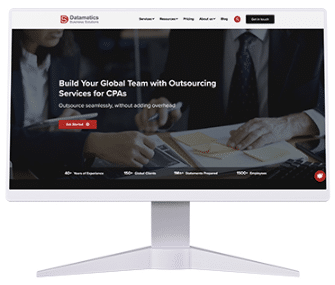Clean, complete, and current data is the cornerstone of every thriving B2B marketing campaign. Whether it is account-based marketing (ABM), personalised email campaigns, or pipeline forecasting, everything runs on data. It is the fuel that runs the modern B2B marketing engine.
For the Chief Marketing Officers (CMOs) of today, data is both the map and the compass guiding them through the dense jungle of campaign design, audience targeting, and even revenue forecasting. Yet, if you look through the microscopic lens, beneath the surface there is a quiet chaos, slowly decaying this foundation—dirty data.
Often characterised by inaccuracies, reduplications, unfinished entries, obsolete information, and discrepancies, dirty data is the termite that is silently decaying US businesses. The impact of dirty data reaches far beyond the realm of minor clerical headaches. It reaches deep into the heart of marketing effectiveness, damaging campaign ROI and eroding brand reputation.
With the monumental transformation that the current B2B ecosystem is undergoing, thanks to the deep advancements in the field of artificial intelligence (AI) and large language models (LLMs), the hidden cost of poor data will continue to intensify if not addressed today.
In this blog, we take you on a voyage into the unexplored world of dirty data, unleashing its hidden cost, and why the need for dedicated data cleansing practices is no longer a need of tomorrow; it is the first step of every forward-thinking CMO.
Unveiling the Silent Saboteur
In the world driven by data, dirty data wears many disguises, making it nearly impossible to distinguish it from your existing database. However, there are signs that make it evident that you are dealing with dirty data. Some of those glaring signs include:
- Duplicate contacts and accounts
- Outdated job titles and company names
- Invalid email addresses or phone numbers
- Incomplete firmographic or demographic profiles
- Typos and inconsistent formatting
According to a recent report published by Integrate and Demand Metric, nearly 75% of senior marketing operations and demand generation professionals estimate that at least 10% of their lead data is inaccurate, outdated, or non-compliant.
For mid-sized and enterprise B2B organisations that run huge databases across multiple tools—CRM, marketing automation, and data enrichment platforms—the aforementioned dirty data signs multiply fast.
The High Price of Dirty Data
We are living in the age of data; everything around us is either already driven by data or soon will be driven by data. B2B marketing falls in the former category. Every modern organisation boasts about its data-driven B2B marketing through personalised campaigns, informed strategic decisions, and tailored customer experiences.
Thus, if the data powering all those campaigns is flawed or inaccurate, the consequences very soon ripple across every facet of a marketing operation. Bad data quality manifests in many ways: inaccurate contact information, duplicate records, outdated firmographics, or non-compliant data that violates regulations like GDPR or CCPA.
Each one of those issues carries a tangible cost, both in terms of financial losses as well as missed opportunities. Let us have a closer look at those losses.

Financial Losses from Wasted Resources
Dirty data automatically translates into ineffective campaigns, consequently influencing the bottom line by wasting marketing budgets. As per a 2024 study by SiriusDecisions, nearly 10-25% of the marketing budget for enterprises is squandered due to poor data quality.
Dirty data results in targeting the wrong audiences, which results in lost efforts that yield no return. According to a recent study published by Gartner, marketing teams can spend up to 50% of their time hunting for data, confirming untrusted information, or correcting errors, all of which can cause loss of resources as well as severe financial losses
Missed Opportunities and Lost Revenue
In addition to the financial losses, dirty data also is the leading cause of missed opportunities for businesses, stifling their growth. In the world of B2B marketing, timing is the key; if you miss key buying signals such as a new appointment, a funding round, or a shift in a prospect’s needs, you run a serious risk of losing a deal to your competitor, directly contributing to lost deals and churn.
Hence, to engage with high-potential prospects at the right moment, your marketing teams need accurate data.
Irreparable Damage to Brand Reputation
Trust goes a long way in the B2B markets. If a prospect loses trust in your brand, it can have long-lingering repercussions. A simple way that can trigger it is sending emails to incorrect addresses. It will increase your bounce rate, damaging the company’s sender reputation and even leading to blacklisting by email service providers. Worse, if you send an irrelevant or poorly targeted message, it can make your brand look unprofessional and out of touch.
A good example of it we all witnessed was the fallout faced by major brands like Amazon and WhatsApp, which incurred fines of $800 million and $270 million, respectively, for suspected GDPR non-compliance due to mishandled customer data.
While these are examples from the B2C space, they very well apply to the B2B world as well. Non-compliant or poorly managed data can attract legal penalties and public backlash, causing irreparable damage to your brand’s reputation.
Misguided Targeting and Ineffective Segmentation
For precise targeting and proper audience segmentation, you need accurate data. If your data is outdated or incomplete, your marketing efforts might look misguided or directed at the wrong audience, which can severely diminish the campaign ROI.
Inefficient Operations and Reduced Productivity
In addition to diminishing ROI for your marketing campaigns, dirty data can also slow your marketing operations. Dirty data demands hours in data cleansing, data deduplication, and verifying contact details from your marketing team.
All that effort can make your marketing operation severely inefficient and can even result in reduced productivity.
Eroding Trust in Analytics
When companies boast about making data-driven decisions, what they actually boast about is their reliance on trustworthy analytics. However, if your analytics are driven from dirty data, your performance metrics will be skewed, leading to misguided strategies. For example, if your CRM data is full of duplicate records, your campaign analytics will show inaccurate engagement rates, giving a false sense of success.
Data Cleansing – A Cure to Dirty Data
Data cleansing as a practice is the most effective cure for dirty data. While in a literal sense data cleansing might sound like an occasional spring cleaning exercise for organizations, in practice it is an ever-evolving process of preventive maintenance, validation, and enrichment of your CRM data. In practice, a robust B2B data hygiene program typically includes
- Data Deduplication: Flagging and merging duplicate data records.
- Data Validation: Manually verifying emails, phone numbers, postal addresses, and firmographics.
- Data Standardization: Ensuring that data fields like titles, industries, and formatting align with CRM rules.
- Data Enrichment: Identifying the data gaps and filling them with the latest information, such as job roles, company details, and intent data.
- Data Governance: Introducing automation and implementing rules for ensuring that incoming data is kept clean.
Every modern B2B business these days is investing heavily in dedicated data cleansing tools or outsourced B2B data cleansing service providers to ensure that their CRM data remains free from any inaccuracy or stale information.
Data Cleansing Process: The Best Practices for CMOs
For every B2B data organisation, a fruitful data-cleansing program needs commitment across people, processes, and technology. Here are some best practices that you as a CMO must adapt for your organisation to ensure that your CRM has clean and updated data at all times.

1. Build a Data Quality Culture -
Maintaining data quality is not a one-person job—certainly not for your IT team. As a CMO, you ought to train your marketing and sales team on best practices to maintain the highest data quality possible by entering accurate information. You can even tie data hygiene metrics to your teams KPIs.
2. Regular Data Audit
You must schedule regular data audits to identify and flag even the slightest occurrence of data decay. You can have quarterly or biannual data audits for identifying duplicates, decay, and inconsistencies before they snowball.
You can also read: Top 10 Data Cleansing Companies in USA
3. Automate Where Possible
You must leverage advanced data validation tools for automated data validation—email verification, duplicate detection, and real-time enrichment with trustworthy third-party data. Your marketing operations team must work in close association with CRM admins to enforce data governance rules
4. Align Sales and Marketing
You will often find dirty data hiding in the gaps between the systems—CRM, marketing automation, and sales engagement tools. You must abridge these data silos with synced databases, shared definitions, and clear processes for ownership.
5. Partner with Outsourced B2B Data Cleansing Providers
In case your team lacks the bandwidth or data cleansing expertise, it is always better to outsource data cleansing to specialists who can deliver faster results. There are several data cleansing service providers that offer tailored solutions for B2B companies, combining AI-powered validation with manual review for high accuracy.
The Futuristic Edge: Data Hygiene in Tomorrow’s B2B Marketing
The advancements in artificial intelligence, machine learning, and predictive analytics space are reshaping the B2B landscape; as a result, the cost of poor data hygiene will only compound. Despite being immensely powerful, all these technologies essentially rely on clean data inputs.
As a CMO, it is your responsibility to invest in data cleansing services today to get your firm future-ready with capabilities to pivot with market realities, capitalize on evolving opportunities, and grow the trustworthiness of your brand.
If you lack bandwidth or in-house expertise on data cleansing, you can always write in to us then you can mail us at marketing@datamaticsbpm.com, and we will have our B2B database solutions expert help you unlock the true value of your data through timely data cleansing leveraging advanced automation and human ingenuity.

James Libera

